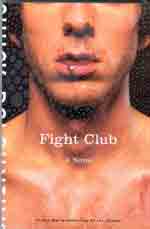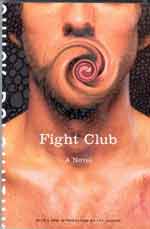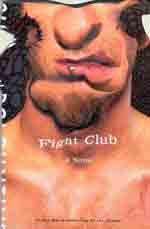



English 271 Exam Pt. 2
20 pts. possible (20% of semester grade)
Due date: Thurs., Dec. 8th
Criticism as
Response-in-Kind Having had a taste of several established critical approaches
to literature this semester, you will now try something a little different.
For this portion of your exam, I want you to think of yourself as someone in
conversation with a given text and its author, and to think of both
yourself and the writer as participants enmeshed in the larger, ongoing
dialogue between art and life. A novel, short story, or poem, according
to this approach, is not an object to be dissected on an operating table,
or used for political change, or turned like a key to open the psyche
of the author, or held up as a mirror on our culture. According to this
approach, any of those methods is actually the height of arrogant rudeness
at the least, and completely missing the purpose of art and literature
at worst. Established forms of critical analysis, in fact, according
to this alternative way of thinking, are tantamount to the illogic or
conversational rudeness of non sequiturs. A work of art or literature
asks its viewer or reader to engage with it in its own language, human being to human being; and it is only common
courtesy then that you would respond to a story, poem, play etc. by speaking
yourself in the language of the story, poem, play—or some other
fine arts medium. Imagine
that the literary work is a question or utterance, and that your creative-critical
response is an answer or counter-utterance; one which, hopefully, raises
its own questions and keeps the conversation going. Criticism as
Embodied Performance Another way to imagine the sort of alternative criticism I’m talking about is to consider the meaning of “performance.” Any performance is a kind of translation; a performer “does” or “embodies” a particular work in a medium different from the original. A symphony orchestra, for instance, translates Beethoven’s “Ode to Joy” from the written score to its manifestation in sound; an actor translates the script for Star Wars from its written form on the page to its embodiment in front of the camera. Even reading a written work silently to yourself, hearing and feeling in this most private way, is a form of performance/ translation. Performance as I'm thinking of it here is also a way of being in your own body. Throughout the semester we've referred repeatedly to "critical lenses" and we've used the analogy of sight to understand critical orientations to literature. (Notice how often we say that we "see" something—by which we mean that we "understand" it.) But sight is only one sensory mode; we "know" things in many ways other than by sight or cognition/intellect. So think now of the different kinds of criticism we've been exploring not just as "lenses" but as whole-body, even physical/sensory orientations to literature. A culturalist, for example, isn't just "seeing" literature in a specificalloy culturalist way by grasping it with her mind; she is experiencing it in a specifically culturalist way with all of her faculties. And finally, any performance is necessarily always an interpretation. No two performers will understand a work in exactly the same way, and will privilege some elements in the work over others, will discern a different overall meaning, will understand the artist’s purpose differently, and so on. Even no two performance instances are identical. An actor doing Hamlet’s famous “to be or not to be” soliloquy is unlikely to do it exactly the same way every time; there will always be differences in shading and intonation, at the very least, depending on how an actor feels at any given moment. So any performance is a unique translation and interpretation—is, in fact, a form of criticism of the original work. When you “perform” a work, in other words, you are implicitly exercising some form of criticism. For this assignment you will do literary criticism (literary interpretation)
through creative response or sensory performance using electronic new media.
I’m requiring new media because many educators and theorists now
believe that electronic and visual literacies are increasingly part of
what it means to be an educated citizen. I’m also asking for this
because new media allow, in a sense, for you to get your body into
your interpretation through image, motion, space, and sound. Because
it is so new and is in fact evolving even as I write this, the exact
definition of “new media” is still somewhat unsettled. But
let’s say that, for the purposes of this assignment, it means any
form of electronic composition: digital video, web pages, email, Word,
Flash, Photoshop, Power Point, Publisher documents, etc. Instructions In a digital medium of your choice, perform, answer,
or otherwise “do” a scene,
a character, a theme, a question, or an image from Palahniuk’s Fight Club. In other words, "see" the novel with your body. Translate/embody/interpret/
respond to some facet of the novel in your chosen medium. Consider
your feelings about the book, its textures, its world view, the nonverbal,
physical, and intuitive responses
it arouses in you. For example, if using Power Point, you can produce
a performance which includes, besides the written word: images, color,
animation, audio narration, music, web links, and video. Re-produce the
work/talk with the work/talk back to the work/enter or envelop the
work—keeping in mind all the while that you are making an interpretation of it. If
and whenever possible, see if you can draw in interesting ways on some
of the critical theories we’ve studied this semester as you work
on your performance, though this should be subordinated to the sheer
pleasure of creative, exploratory, rowdy performance. Note: because working with electronic media can be a complex undertaking (especially if you’re new to it), it’s probably a good idea to sketch out or “storyboard” your piece before actually playing with the medium itself. Again, however, this may not work for everyone and it may actually be better to just dive right in. I.e., don’t overdo the planning and thinking. Go with your instincts. For excellent
assistance with digital media, contact the When you turn in your project, include a Supplementary
Notes page which explains: ® any technical glitches or other difficulties you experienced; ® how experienced your were with your chosen medium to begin with and what your learned; ® what, if anything, has been left undone. Purpose This segment of your exam is meant to give you practice with at least one alternative and experimental kind of literary interpretation, and to help you see that criticism is in fact not a static “done deal,” but an ever-evolving, fluid practice, much like literature itself. This project should also help you to better understand literature by asking that you engage in a type of literary work yourself. Finally, the exam is designed to encourage, not just intellectual and analytical engagement with literature, but intuitive and creative engagement as well. Evaluation Criteria Everyone will do a brief, 10-15 minute presentation
of their exam-in-progress for the class. (See schedule.) Length/Size/Duration This completely depends on your chosen medium and the relative difficulty of your project. Also, it’s hard to indicate any strict guidelines or requirements, because this is an experimental project. Let’s just say that a very low-tech Power Point piece that relies on templates (pre-made visual designs) and few innovations should be at least 12 slides; a very high-tech and experimental one (with inserted video, self-make photos, recorded voice-over, etc.) should be at least 5. Stay in touch with me as you work on your interpretation, and I’ll help you gauge whether the length or scope of your project is sufficient. Other factors Be sure to: 1) “say” something clear or clearly felt about Fight Club, remembering that any performance or response is an interpretation; 2) produce a performance that shows active experimentation and conscientious engagement; develop the piece for sufficient complexity and interest; 3) avoid clichés and platitudes; 4) try to produce an artwork (or hybrid creative-critical document) that stands up on its own as a unified entity; unity and wholeness, however, are subordinate in this assignment to a willingness to experiment; 5) edit and proofread any writing in the piece; 6) credit any outside sources; 7) provide a title/title page;
8)
test your document on several computer systems in different locations; —and last but not least— 9) engage more than just your critical or analytical mind. Since the language of art and literature is a dense composite of intellect, intuition, feeling, dream, vision, sensuality, verbal play, willfulness, and accident—your performance should include those elements. You must hand in your finished piece on a clearly labeled zip disk, floppy, Flash drive, or CD. Enclose any and all media in a 9 x 5-inch manila envelope or similar item with secure closure. Include identification both outside and inside whatever media you use. Include your Supplementary Notes as a document file on the disk or drive. Ideas and Tips · Search for images: o scan images from books, magazines, and personal photo collections o find images, sounds, and music you can copy from the Web o search Power Point (Word, Publisher, Flash etc.) for their in-house free images and clip art · Start with a favorite line, passage, or chapter of the novel to focus your response. Or: start with a single image; even just a phrase or word. Use this as a springboard, focus, or motif for your complete interpretation. · Use the power and interest of collage. (Photoshop is great for collages.) Juxtaposing and overlapping images can make for a complex, dynamic statement. I.e., you can say things that you can’t say any other way. · Use the power of the montage: a string of juxtaposed images as in Power Point. · Consider adding a narrator’s voice-over (your own recorded voice), or music, or special sounds of any kind. · Write a visual story or poem in response to the novel.
·
Write a letter to Chuck. Do this in writing, in images, or in sound—or
all three.
·
Use Photoshop to warp, tear, punch, and pummel images and even words. · Remember that the digital medium is your choice: do a webpage with Macromedia Dreamweaver; produce an animation in Flash; do a parody of an academic or corporate Power Point presentation; make something interesting out of/do something interesting with: o email o message boards o Blackboard
o
Microsoft · Make digital soap. You tell me.
|